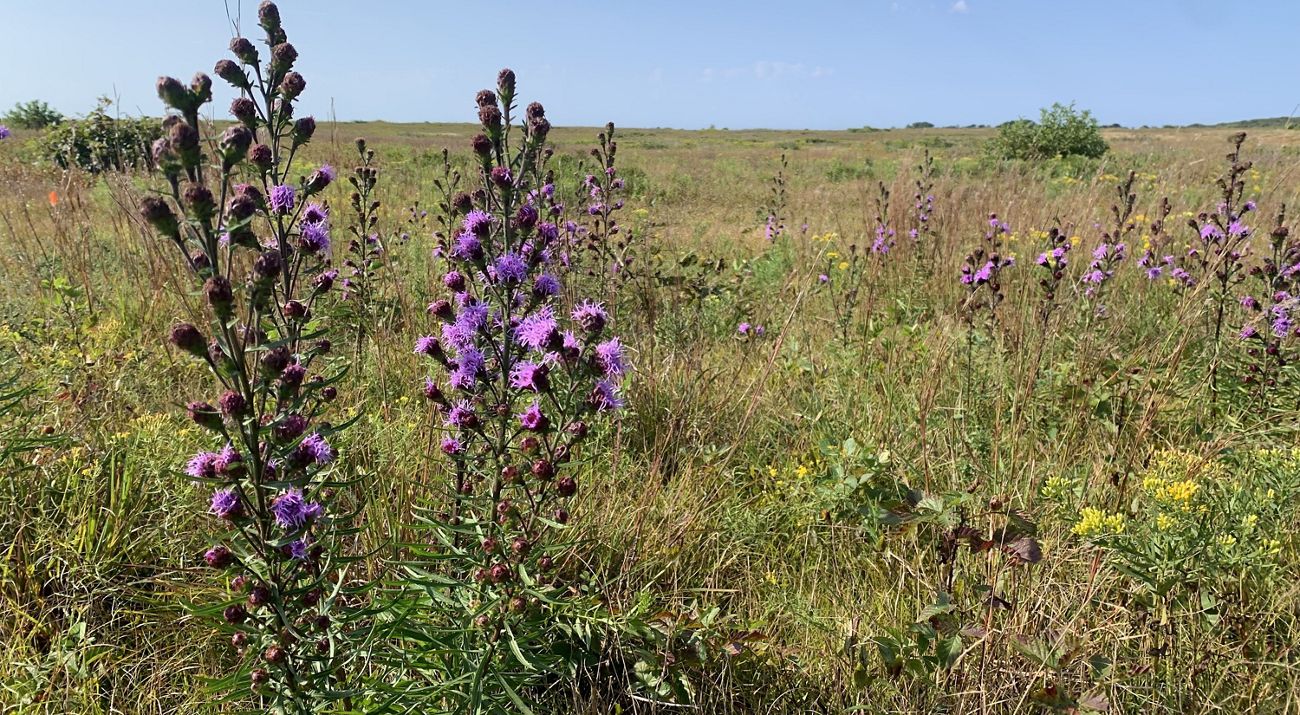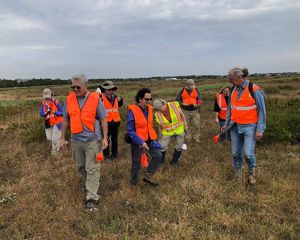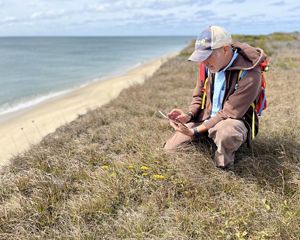Restoring Imperiled Grasslands on Martha's Vineyard
The Island is one of the last remaining strongholds of sandplain grasslands, an important habitat for rare species.
On several days over the last few summers, volunteers have been supporting plantings of native wildflowers like butterflyweed, blazingstar, golden rods and asters at The Nature Conservancy's Bamford Preserve on Martha's Vineyard. As breezes off the ocean send a ripple through the grasses, volunteers spread out across the grassland armed with trowels, pin flags and trays of wildflower plugs to plant. Once the seedlings are in the ground, they use a tank of water on the back of a utility vehicle to water them all.
Plantings like these are part of TNC’s larger effort to protect, restore and expand sandplain grassland ecosystems across their range, increasing biodiversity and securing resilient lands in the face of climate change. The habitat supports many rare plant and animal species but is becoming increasingly rare around the world—Martha’s Vineyard is one of the last remaining strongholds
A History of Conservation on Martha's Vineyard
Over the past 35 years, TNC has helped protect more than 1,500 acres of land on Martha’s Vineyard, with a focus on conserving, managing and expanding coastal plain heathland and grassland habitat. Securing these resilient lands will protect rare plants in the face of climate change, as coastal sand- and silt-based habitats are especially vulnerable. Management of these systems also maintains historical open landscapes and reduces fire risk for Island communities.
Stay Up to Date!
Sign up for our monthly emails to hear about work like this and volunteer opportunities.
TNC is an authority on coastal plain heathland and grassland research and co-founded the Sandplain Grassland Network, a project that pulled together scientists and land managers across the Northeast to create a guidebook for implementing innovative restoration to save this habitat. In 2023, the Network published a paper in Restoration Ecology based on the guidebook: Challenges, successes, and recommendations for management of coastal sandplain grasslands as regional biodiversity hotspots in the northeastern United States. The Network has also held several conferences and fieldtrips to share lessons learned in sandplain systems from New York to Maine.
“We practice adaptive management with the sandplain grasslands on the Vineyard: we try things, monitor the results and make changes based on those results,” says Karen Lombard, director of stewardship and restoration for TNC in Massachusetts. “The Network makes this much easier.”
Quote: Karen Lombard
Our current restoration work on Martha’s Vineyard builds on four decades of management by TNC staff.
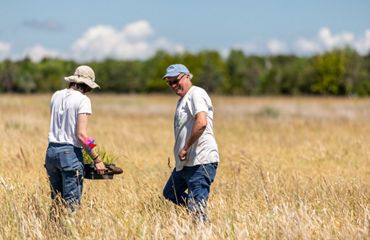
Planting Native Species at Bamford Preserve
The 60-acre Bamford Preserve in Edgartown was once a thriving sandplain grassland before it was converted for agriculture. TNC purchased it in 2001—in the largest land deal on the Island by monetary value—and has been working to restore it since by planting native species like little bluestem grass, butterflyweed and more, while managing the land through mowing and prescribed fire. Beginning in 2007, TNC and the Marine Biological Laboratory in Woods Hole conducted research on the best restoration practices for the site. Now, we’re applying what we learned.
“Since acquiring the land, we have planted hundreds of pounds of native grass seed at Bamford Preserve. Our efforts are beginning to show—the grasses have filled in the landscape the last few years,” says Lombard. “It’s exciting to see that the research that TNC and partners have done over the years through the Sandplain Grassland Network is supporting our success.”


Wildflower plantings are the second phase of restoration after planting grasses. They not only provide pops of color and diversify the landscape, but they also support native pollinators like monarch butterflies, as well as meadowlarks and many other species. Thanks to the hard work of volunteers and seedlings from Polly Hill Arboretum, these wildflowers are taking root, settling into the ecosystem and spreading across the landscape. Additional plantings will continue to keep building up the populations.
Sustaining the Grassland
With several rounds of successful seedings and plantings complete, the focus is on maintaining the land—sandplain grasslands require constant management to recover and persist. To remove non-native species that could impact the growth of native grasses and wildflowers, TNC conducts regular mowing as well as controlled burns.
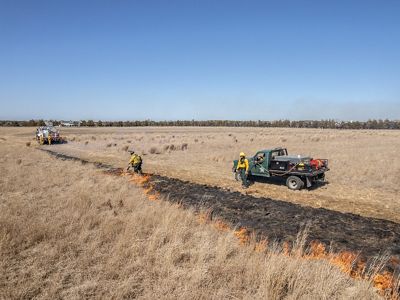
In spring 2023, TNC partnered with The Trustees of Reservations on prescribed burns at Bamford Preserve and several other similar sites, thanks to funding from MassWildlife’s Habitat Management Grant Program, and assistance from the Massachusetts Department of Conservation and Recreation, as well as the towns of Edgartown, West Tisbury and Chilmark. These carefully controlled fires ignite years of seed planted in the soil—fire helps these native species grow and thrive—and reduce the non-native woody vegetation cover and cool season grasses leftover from agricultural use of the land.
The hope is that a few years down the line, Bamford Preserve will look like its neighbor, Katama Airpark, one of the best examples of sandplain grassland in the region that is also managed by TNC.
Types of Sandplain Grassland Management
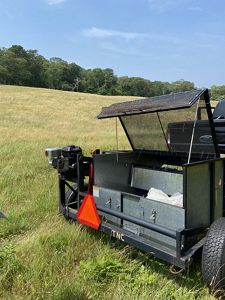
Seeding Native Grasses
The first management action TNC took to restore Bamford Preserve included spreading native grass seed, like little blustem, throughout the grassland.
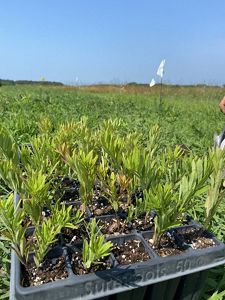
Planting Native Wildflowers
Over several summers, TNC and volunteers have planted native wildflower seedlings to fill out the ecosystem, support pollinators and more.
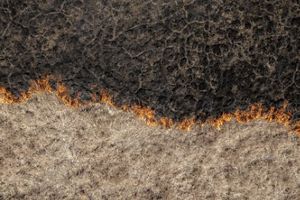
Controlled Burns
To manage non-native species that crop up, controlled burns are conducted regularly in partnership with the town and other Island organizations.
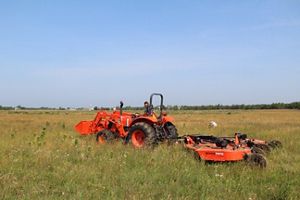
Mowing
For additional maintenance to support the native plants, TNC mows each grassland section annually and monitors the impacts of this action.
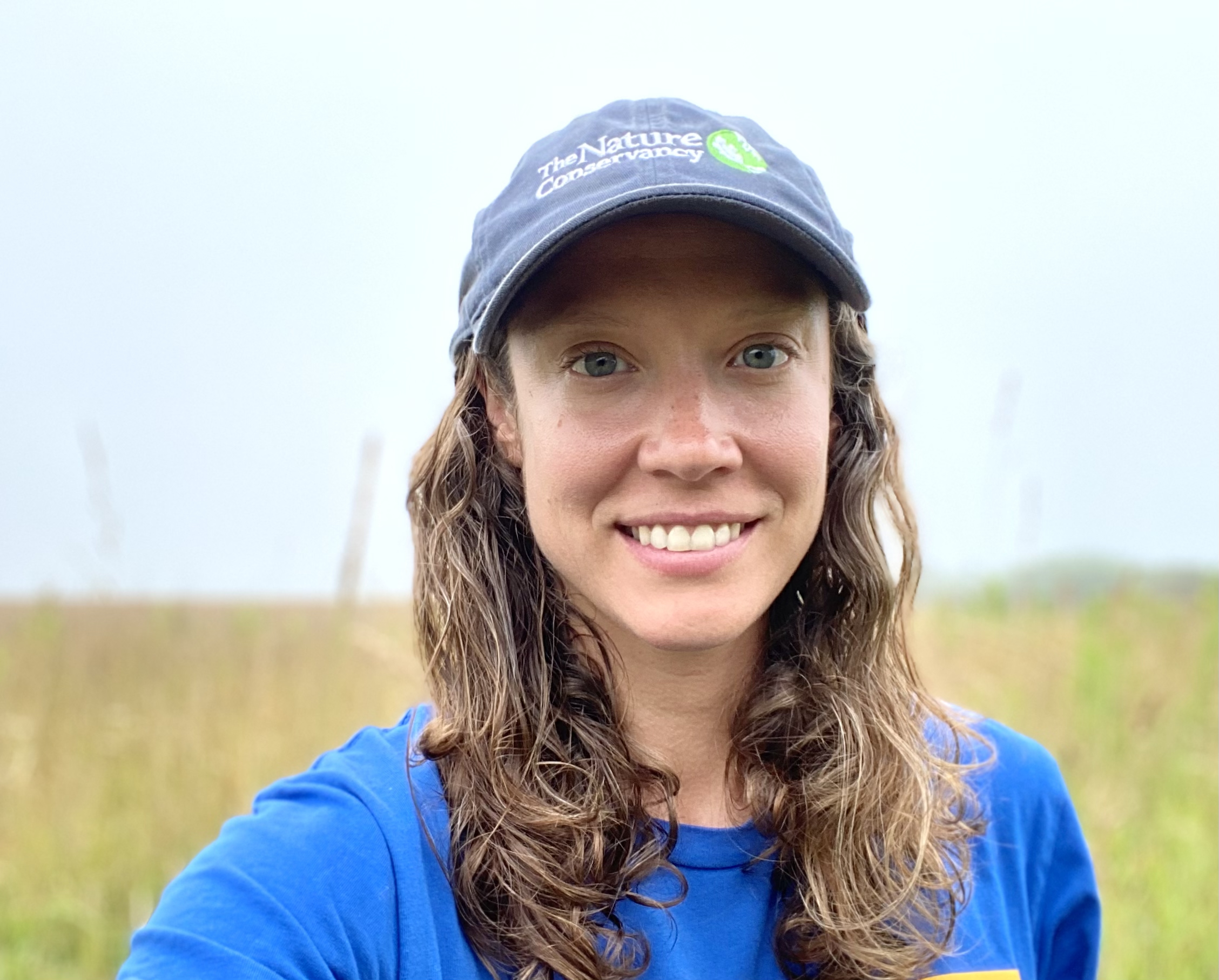
Get to Know Our Staff
Bekah Myers, Stewardship Manager for Southeast Massachusetts and Islands
In January 2024, Rebekah (Bekah) Myers took over the role of stewardship manager for southeast Massachusetts and the Islands from Mike Whittemore. She has jumped into management, monitoring and more across the region, particularly on Martha’s Vineyard.
What got you started in the conservation field?
I originally went to college for film and dreamed of filming nature documentaries but had always had a proclivity toward science. I eventually went back to school to study wildlife science and gravitated toward biodiversity and nature conservation, especially during my Master's in Natural Resource Management. Throughout my academic years, I was fortunate to be involved in field research across four continents and work extensively in Africa.
What led you to TNC?
I was a supporting member of TNC for many years before joining the staff and knew being a part of this work was something I could be proud of. I’m enjoying putting into practice all the formal knowledge about conservation I’ve gained from my academic and field research.
How have you approached stewardship on the Vineyard?
There’s a lot of learning to do about the environment of the Island, about the ecosystems and botany, but also about the place and people here. I have a background in socio-ecological systems, which is how people and the environment interact for successful conservation, so learning the societal nuances of the Island’s culture as well as the ecology is important to me as I settle into this role.
What are you excited about?
I’m excited every day to bring a fresh perspective to the role and to learn from locals, TNC peers, and past and surrounding management to holistically conserve these globally rare ecosystems.

Hoft Farm Research Station
TNC has been housing conservation interns, volunteers, scientists and staff from other organizations at Hoft Farm in West Tisbury at a subsidized rate for more than 20 years. Short-term housing affordability is a challenge for those working on the Island, so providing this opportunity is essential to furthering critical conservation efforts. TNC is currently collaborating with our valued partner, BiodiversityWorks, to manage the station and housing.
